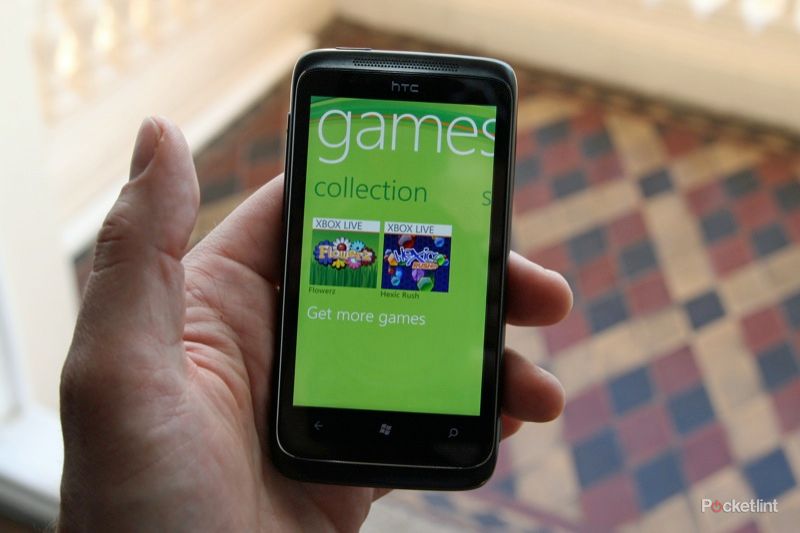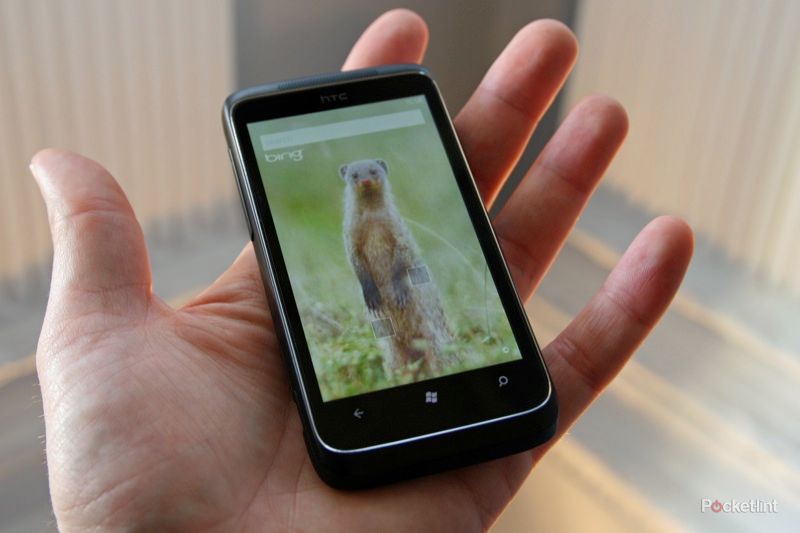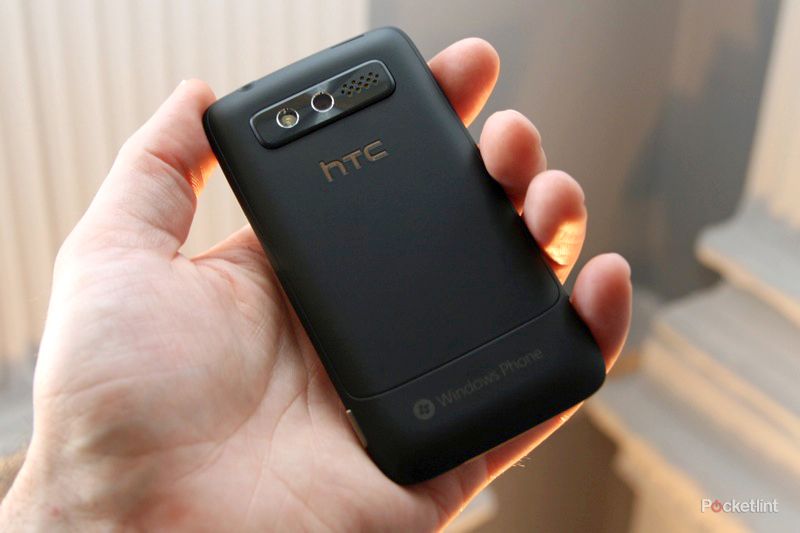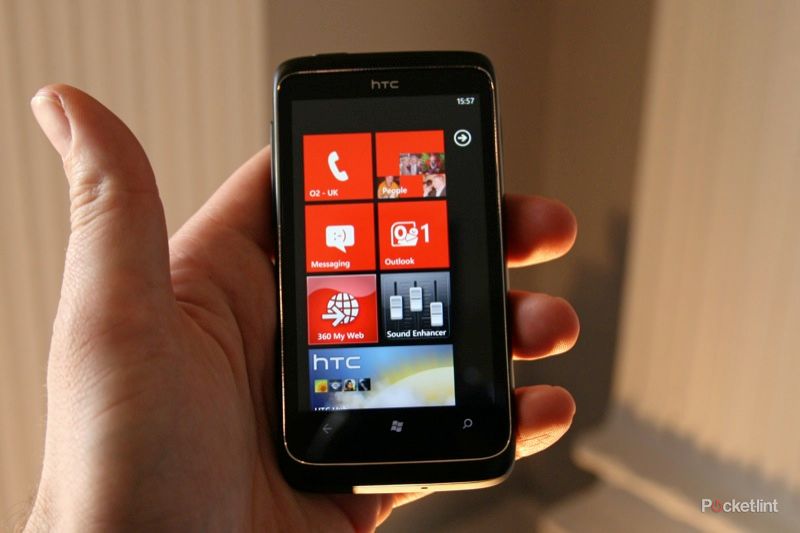With HTC slicing the pie three ways, Vodafone has its hands on the HTC 7 Trophy as one of its Windows Phone 7 offerings. The other handset that Voda will offer is the LG Optimus 7. With Microsoft keeping a tight handle on things by defining the hardware specs and restricting the level of customisation that manufacturers can do, there is little to pick and choose between the phones on offer. We spent Monday at the launch event playing with the various handsets on offer and this is what we thought of the HTC 7 Trophy.
Our quick take
First impressions of the HTC 7 Trophy are good, but we find ourselves drawn in opposite directions to the size of the HD7 and the looks of the Mozart. All that might be irrelevant if you are a happy Vodafone customer, as this would be your only HTC option - so your choice would really be between HTC and the LG Optimus 7.
It is early days for Windows Phone 7, the very start of the story, and from what we have seen so far the new operating system looks good - a world away from the decrepit Windows Mobile 6.5. Of course, we’ll be getting our hands on the HTC 7 Trophy to give you a full review in the near future.

First Look
| FOR | AGAINST |
|---|---|
|
|
We’ve seen the HTC 7 Trophy before at a behind-closed-doors preview, but we didn’t get much time with the phone. This time however, we spent a little more time mulling over what this phone has to offer. Naturally, for the full low down on the performance and the quirks the new operating system throws up, we’ll wait until we have a review handset before passing any sort of definitive judgement.
Of the other HTC handsets, the HTC 7 Mozart goes to Orange, the HTC HD7 - the 4.3-inch bad boy - goes to O2. We’re already seeing disquiet about what looks like the flagship model, the HD7, being exclusively tied to O2, but that’s the reality of the Windows Phone 7 landscape at the moment.
The HTC Trophy is perhaps the least distinctive of the HTC handsets too. It is dwarfed by the 4.3-inch HD7 and doesn’t get to boast about camera specs against the Mozart. Unlike the Mozart is doesn’t have a unibody design either, so it comes across as rather generic. It might have a .1-inch screen increase over Mozart, but we can’t see that making a massive difference to the overall experience.
But in saying it is generic we’re not saying it is poorly constructed. We’ve become accustomed to good build quality from HTC over the past few years and the same values appear to be reflected here. In playing with the phone we didn’t detect any sign of creaks or flex from the casing, but it doesn’t have quite the same sex appeal that the other HTC phones do.
In terms of specs, if you’ve been following the Windows Phone 7 story then you already know them, as there is little difference in any of the phones that have been launched. Around the front you have the 3.8-inch 800 x 480 pixel resolution display, beneath which sit the regulation three buttons: back, Start and search. Around the sides you get a volume control and dedicated camera button, whilst a 3.5mm headphone jack and Micro-USB are also on the roster.
The 5-megapixel camera on the back is supported by a single LED “flash” and also offers 720p video capture. From what we’ve seen of the camera interface it is all very simple and easy to use. Sharing options are presented from the camera roll and you can opt to have your picture automatically uploaded to your 25GB SkyDrive (the cloud-based space you get with your Windows Live account), or sent out via email, messaging or uploaded to Facebook.
Being a Vodafone handset we found that the tiles had been turned red (just as the HTC 7 Mozart tiles were Orange and the HD7 blue) to reflect its network allegiance, although you can select your own colours from a defined selection. But operator and manufacturer customisation is kept to a minimum, with Microsoft staying firmly at the helm. As Andy Lees, president mobile communications business at Microsoft, said at the launch keynote, Microsoft wanted to be “accountable for the total experience”.
From what we’ve seen so far, the user experience is good. We found that WP7 was fast to navigate as we explored the Trophy. The jury is still out however, until we’ve had time to really get to grips with what Windows Phone 7 has to offer (and how it offers it). It certainly seems to be oozing with style, but whether the substance is there to appeal to those who might be looking at Vodafone’s other smartphone offerings like the iPhone 4 or the HTC Desire HD remains to be seen.
HTC has broadly aligned the HTC 7 Trophy with gaming (look at the graphics on its website) whilst the HD7 gets the movie treatment and the HTC 7 Mozart gets the music treatment. In essence, there is nothing “more gamey” about the Trophy than either of the other handsets as Xbox Live integration is part of WP7. We’re yet to really see how this will manifest itself in the real world and whether this will set the smartphone world alight.
With HTC not able to slap its favoured HTC Sense over the top, you’ll find a glimpse of HTC magic in the HTC hub. There are a couple of apps: a Sound Enhancer (to manage the Dolby Mobile and SRS offerings of the handset) as well as stocks, notes and a Photo Enhancer. Of course, it wouldn’t be HTC without full screen 3D animated weather, and within the HTC hub you’ll find just that, able to give you weather for your current location as well as letting you scroll through other places. Yes, you get the rolling clouds and the windscreen wiper to clear away the rain.
To recap
First impressions of the HTC 7 Trophy are good, but we find ourselves drawn in opposite directions to the size of the HD7 and the looks of the Mozart. All that might be irrelevant if you are a happy Vodafone customer, as this would be your only HTC option - so your choice would really be between HTC and the LG Optimus 7.



